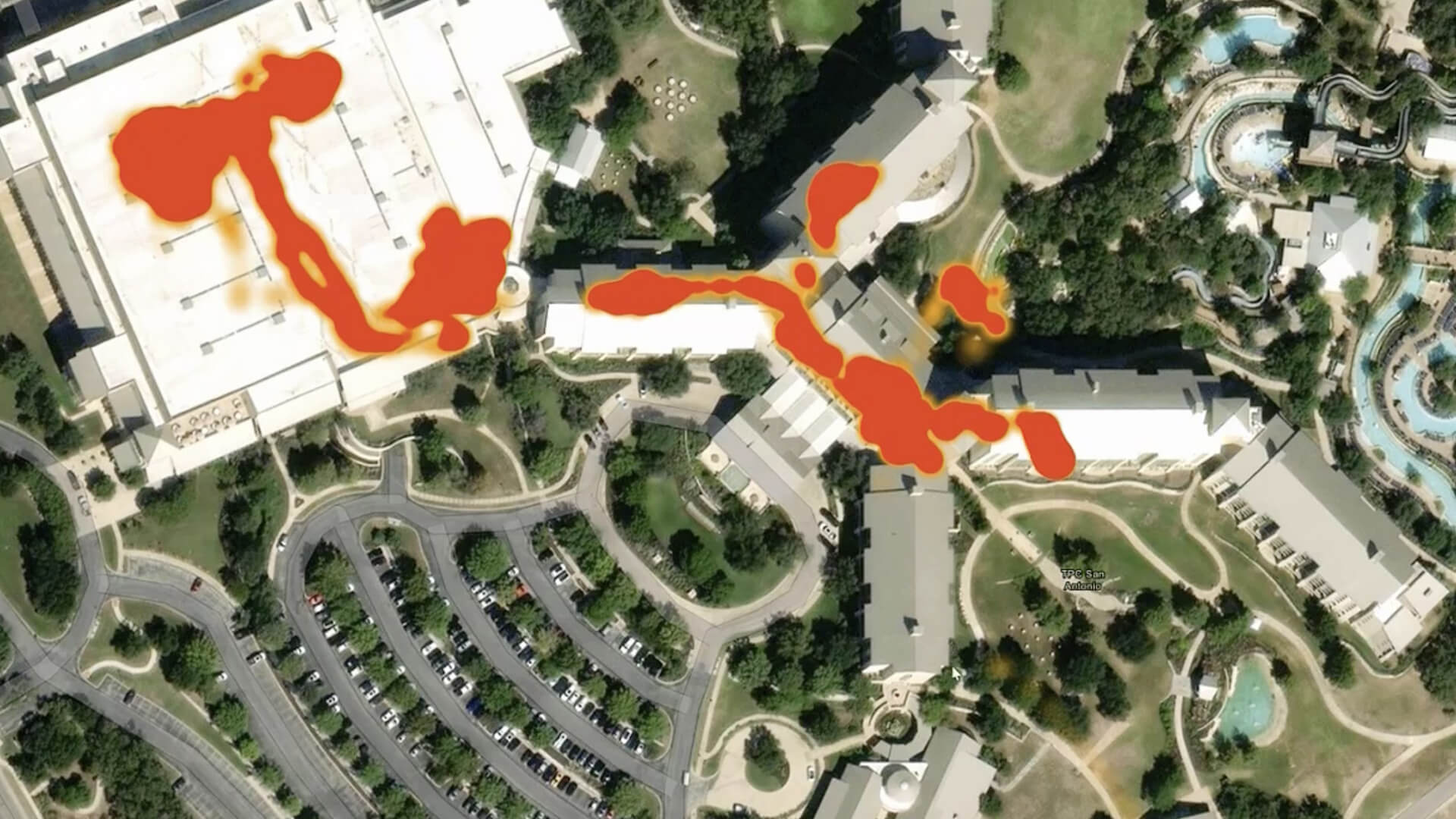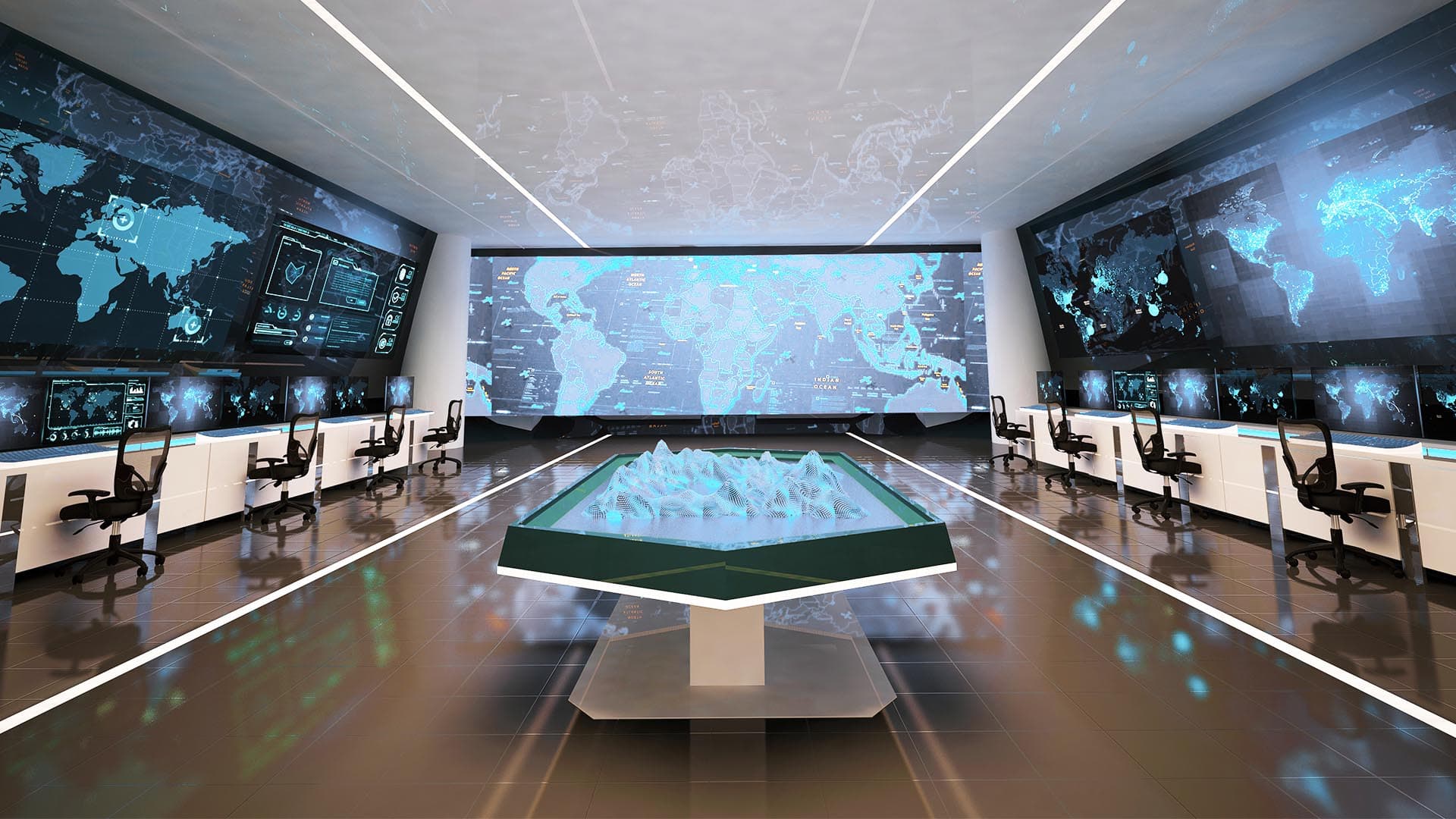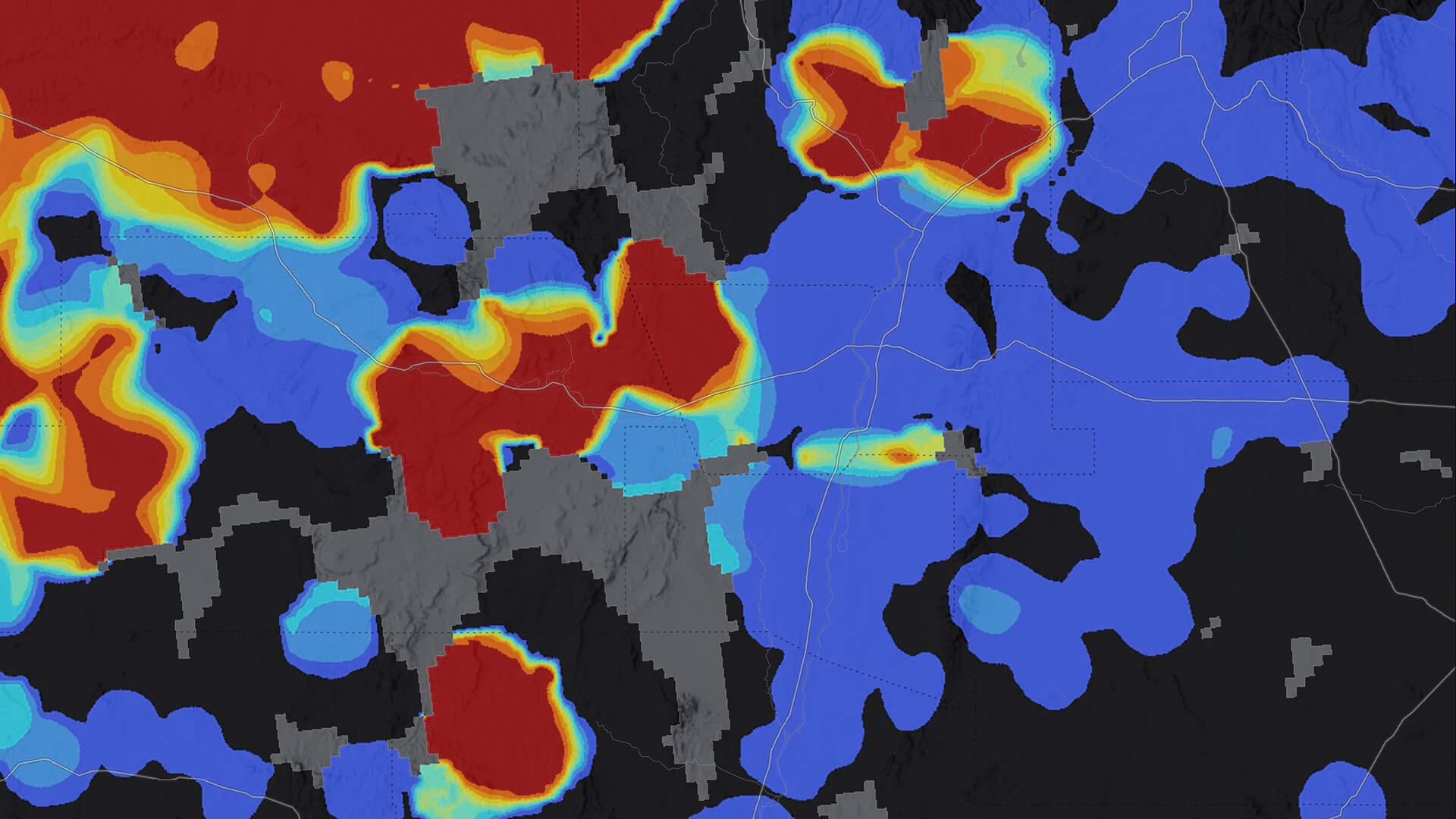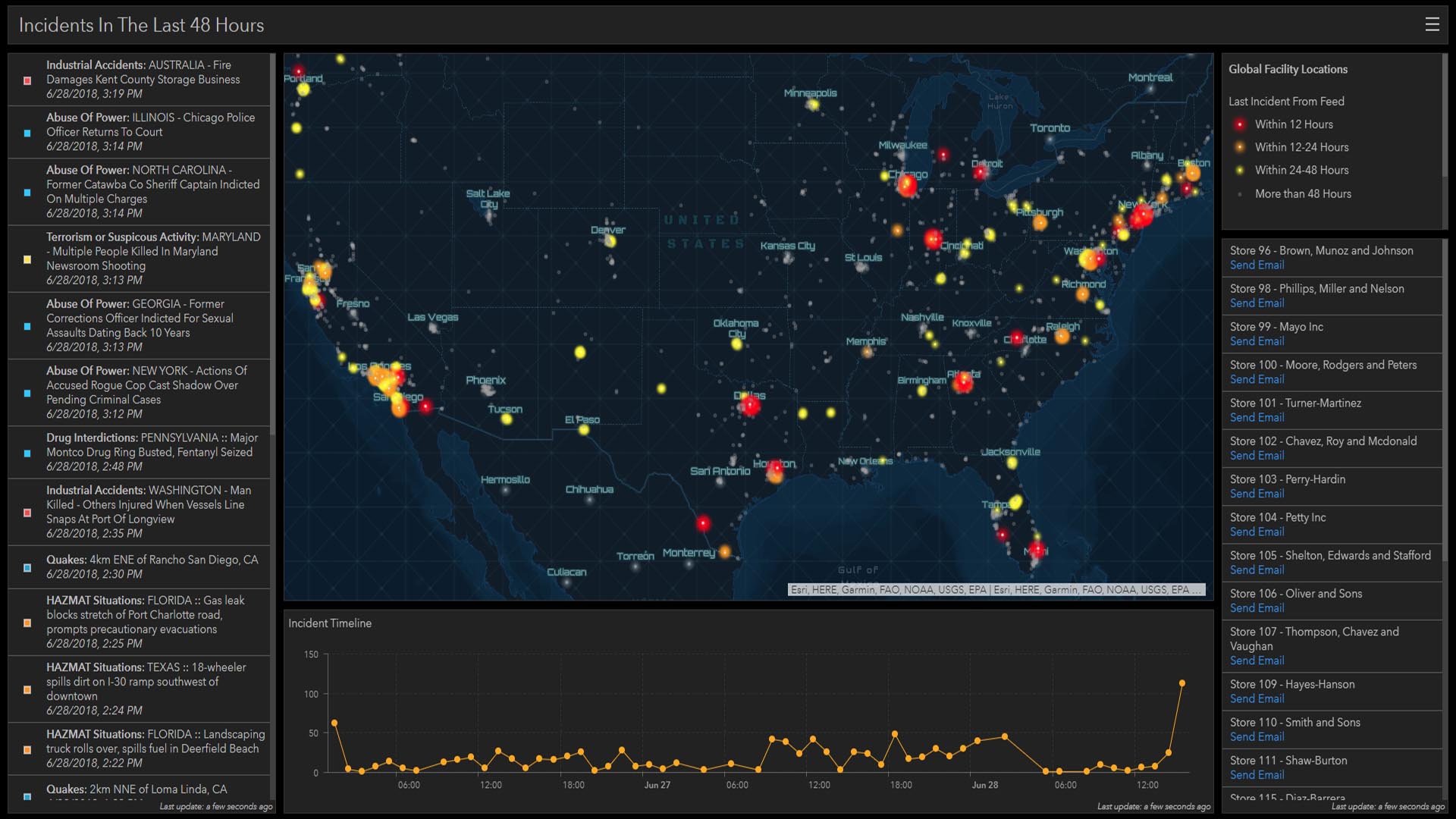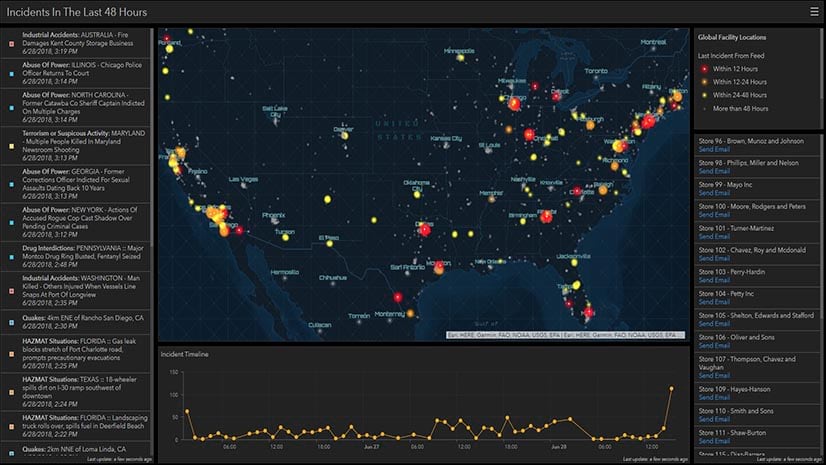It’s a trope of action movies: In a darkened room, a high-tech command center buzzes with activity. Analysts clatter keyboards as images and data flash across glowing screens. At the behest of a commanding officer, a wall-length digital map magically retrieves live information about any location in the world—even monitoring a person of interest in real time.
At Fortune 50 corporations and midsize companies alike, geographic information system (GIS) technology is making such situational awareness a reality—without Hollywood tricks. The location intelligence provided by a global security operations center (GSOC) is central to today’s business resilience, helping organizations counter risks posed by crime, natural disasters, industrial accidents, terrorist attacks, and other adverse events. At the GSOC of one major manufacturer, GIS is used to analyze as many as 200,000 pieces of threat data each year.
A map or dashboard of company operations overlaid with threat data gives executives an information-rich picture of risks to the enterprise and extended enterprise—and much-needed time to respond.
Improving GSOC Risk Awareness for Fixed and Dynamic Assets
Business leaders require a geographic approach for threats to static assets like a data center or power station, and dynamic assets like a fleet of service vehicles or executives participating in an off-site event.
The video below shows how GSOC analysts can track and protect an executive in real time at a sponsored golf tournament. With GIS, a security manager establishes an event perimeter and checks the executive’s proximity to resources like fire extinguishers, defibrillators, and security guards.
When monitoring assets, GSOC professionals use location intelligence to coordinate action, as demonstrated in this video.
GIS technology detects real-time and emerging threats by monitoring news and information feeds, automatically alerting GSOC personnel when an incident is detected near a company facility or asset. In response, a security leader zooms in to gauge the potential danger, and with a click, the operations team notifies the nearest responder so they can take action. The C-suite team and other staff are notified straight from the dashboard.
An executive-level view gives decision-makers a holistic perspective on large-scale risks posed by geopolitical conflict or extreme weather. Focusing on a state afflicted by wildfire, for instance, a security manager can immediately assess the impacted regions and send notifications to company representatives on the ground.
Navigating the New Threat Landscape
In a time of heightened business risk, the global or national view provided by a GSOC dashboard can surface insights that empower better decisions. Many utility executives, for example, are taking extra steps to fortify infrastructure amid a spate of new threats to the power grid. According to a 2022 Politico article, attacks on electricity providers are at the highest level since 2012, often motivated by political extremist groups.
A security manager could analyze patterns common to previous incidents—the time of day when attacks occurred, the weather conditions and visibility, chatter on social media, and the proximity of targeted facilities to roads or other buildings. A manager could apply that data to a map of other substations and power plants and raise the threat level when similar conditions occur in specific locations.
In the last few years, trends like remote work, political polarization, and regionalism have transformed the threat landscape for companies. For business leaders charged with protecting assets on company property and beyond, a GSOC powered by location technology is increasingly becoming the platform of choice.
The Esri Brief
Trending insights from WhereNext and other leading publicationsTrending articles

December 5, 2024 |

November 12, 2018 |

July 25, 2023 |

February 1, 2022 |

March 18, 2025 |

May 28, 2025 |
